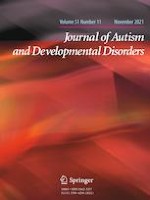30-09-2021 | Original Paper
Visual Exploration and Observation of Real-Life Interactions Between Children with ASD and Service Dogs
Gepubliceerd in: Journal of Autism and Developmental Disorders | Uitgave 11/2021
Log in om toegang te krijgenAbstract
Two original studies explored relationships between visual attention of children with ASD (candidates for receiving a service dog) and their behaviors during their first interaction with a service dog. The first study consisted in video behavioural analyses of 16 children with ASD interacting with a service dog. During the interaction with a service dog, the time children with ASD spent looking towards social items vs objects was associated with how they interacted with the service dog. The second study was exploratory (i.e. 6 children), using the same behavioural approach but coupled with eye-tracking data. The more children with ASD looked at both their parent and the evaluator, as opposed to inanimate items, the more they interacted with the service dog.
